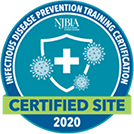I recently had the opportunity to participate in an ASAE webinar: Using Data to Improve Marketing and Membership Promotion presented by Wes Trochlil, President of Effective Database Management and Steve Doran, Vice President of Membership and Marketing with NBOA.
Identifying Data Channels
For the purposes of this webinar, business intelligence is defined as a management process for using data to make decisions. You should begin by identifying your data channels, where the data is kept and who is managing the data for each data channel. There are financial data streams -- for example membership, events registration, exhibits, sponsorship and certification. There are also non-financial data streams -- including industry databases, customer inquiries, volunteer, and website downloads. Customer inquiries can be of particular interest since this relates to what the organization does and provides real time data about what the members are interested in.
It is strongly recommend to integrate all of your data systems to reduce the amount of data you have to manage. Different sources also track information differently, so integration is key. An example of a beneficial integration would be to integrate your platforms for Association Management and Event Registration, which can results in increased efficiency.
Next Steps
Now you must determine what you want to improve or change within the organization. What do you hope to accomplish…perhaps increase the number of attendees at an event, improve quality of programs, or increase total revenue? The next step is to clean your data – ensure everything is spelled correctly and there are no unknown abbreviations. This is a very important step…taking action without cleaning your data can decrease the effectiveness of your plan and impact your results. Steve shared that his organization utilizes a stay-at-home approximately 7 hours a week to continually enter, merge and clean the data so their integrated data is very clean.
Engagement
As part of the cleaning process and to more effectively track engagement, consider that past engagement can predict future engagements. It is recommended to take the time to determine what people and organizations are most likely to engage again. You can create measurable categories and assign values to them, then remove the unengaged from your contact lists.
This data will be very helpful with marketing, retention and recruitment efforts. The data can be used in marketing to predict which people will participate and at what level. Data can be an early retention indicator – showing increased engagement or disengagement. Your data can also help you determine which non-members will be easiest to target given past performance.
Final Considerations
The association must have good data and processes, as well as the right people, in place to leverage the data effectively. If you have a lot of data, start with your best data. Determine who (staff, volunteers, key stakeholders) should be involved in the data discussions. Engage with people/departments whose data is not kept in our AMS.
What will your next action be?




